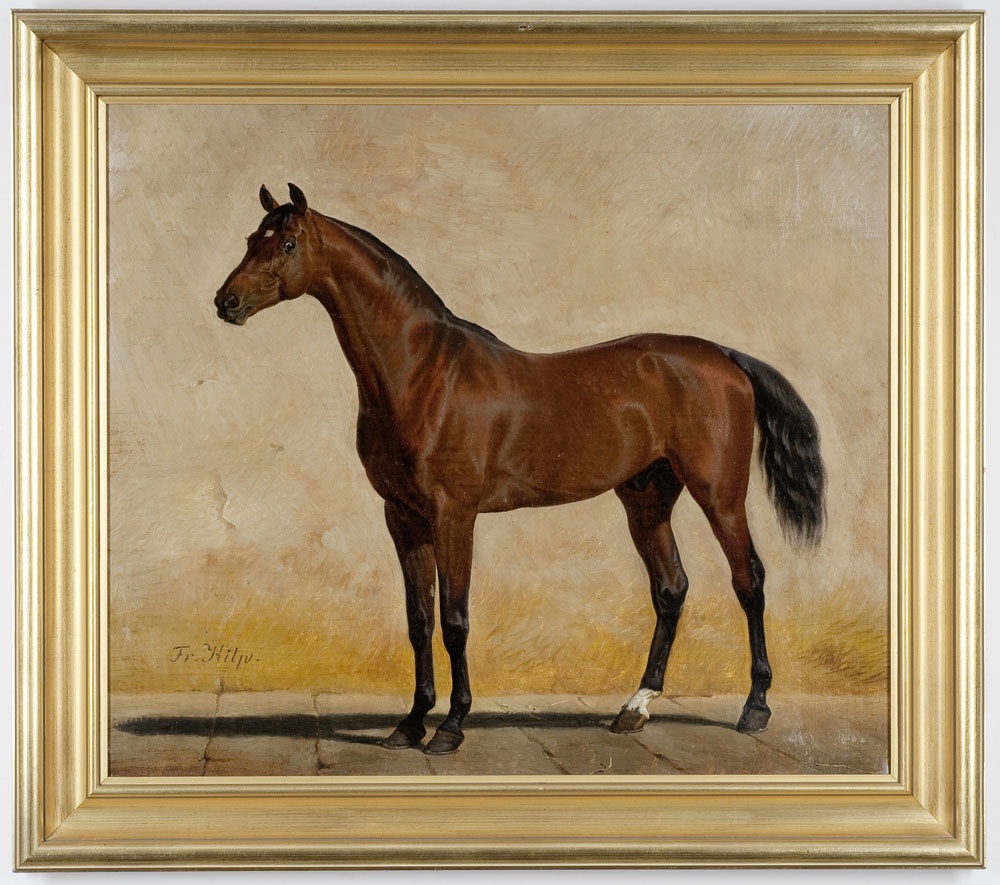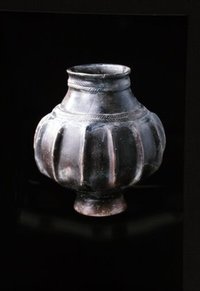Vor einer neutralen beigen Wand und auf ebensolchem Boden, steht ein Pferd. Es ist im Profil gezeigt und schaut nach links aus dem Bild. Sein Fell ist braun, lediglich der rechte Hinterlauf ist kurz über dem Huf weiß gefärbt. Es trägt einen weißen Stern zwischen den Augen. Auf der Rückseite der Leinwand ist das Tier als "Garrick" bezeichnet, ein Englischer Vollblüter, der auf dem Sennergestüt Lopshorn geboren wurde und dort auch deckte. Er wurde von dem Künstler Friedrich Kilp auf die Leinwand gebannt.
Friedrich Anton Kilp wurde 1822 in Nassau geboren. Er war Tier- und Landschaftsmaler, eines seiner Werke ("Ausritt zur Jagd") ist in der Gemäldegalerie in Wiesbaden zu sehen. Friedrich Kilp verstarb 1872.
en

